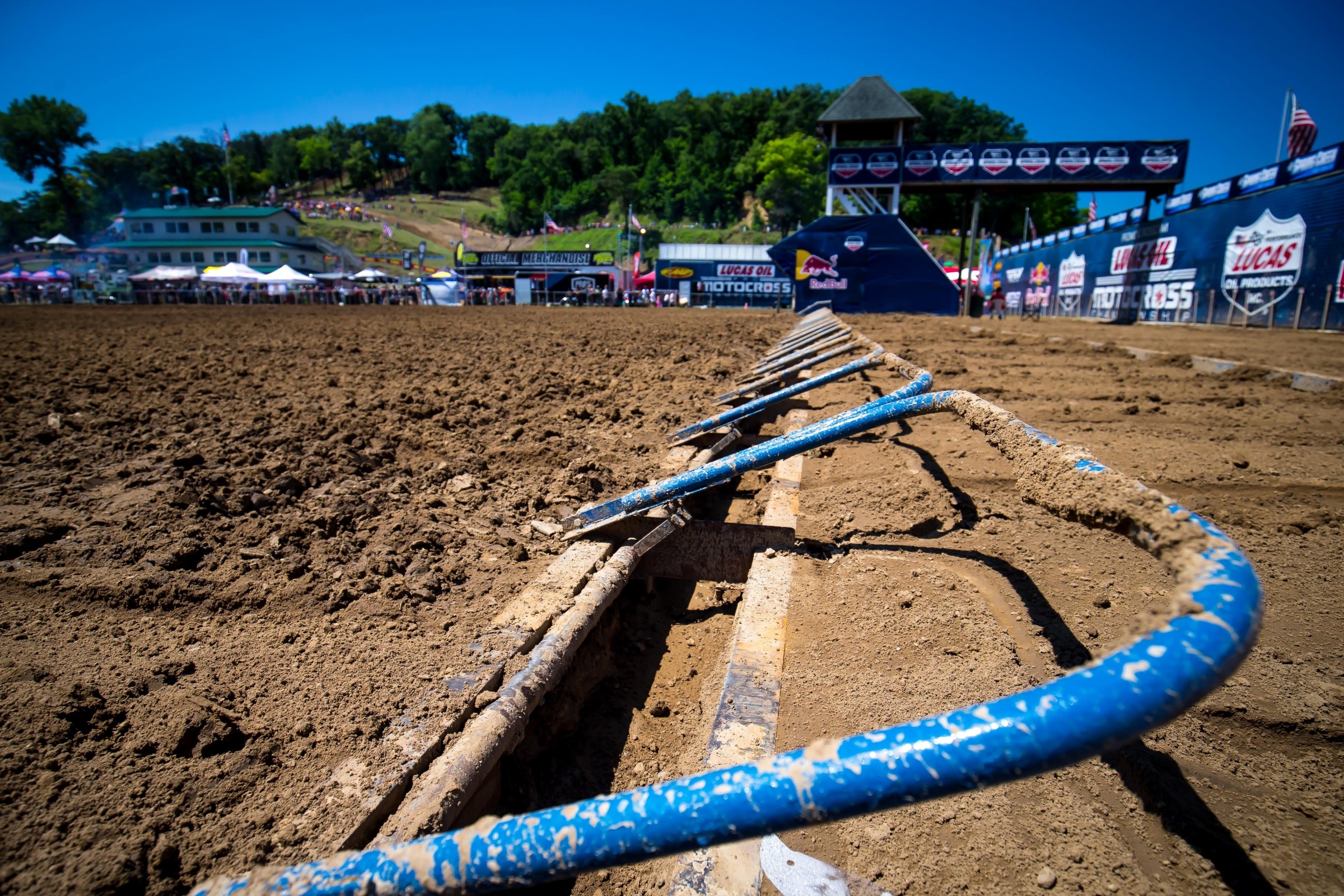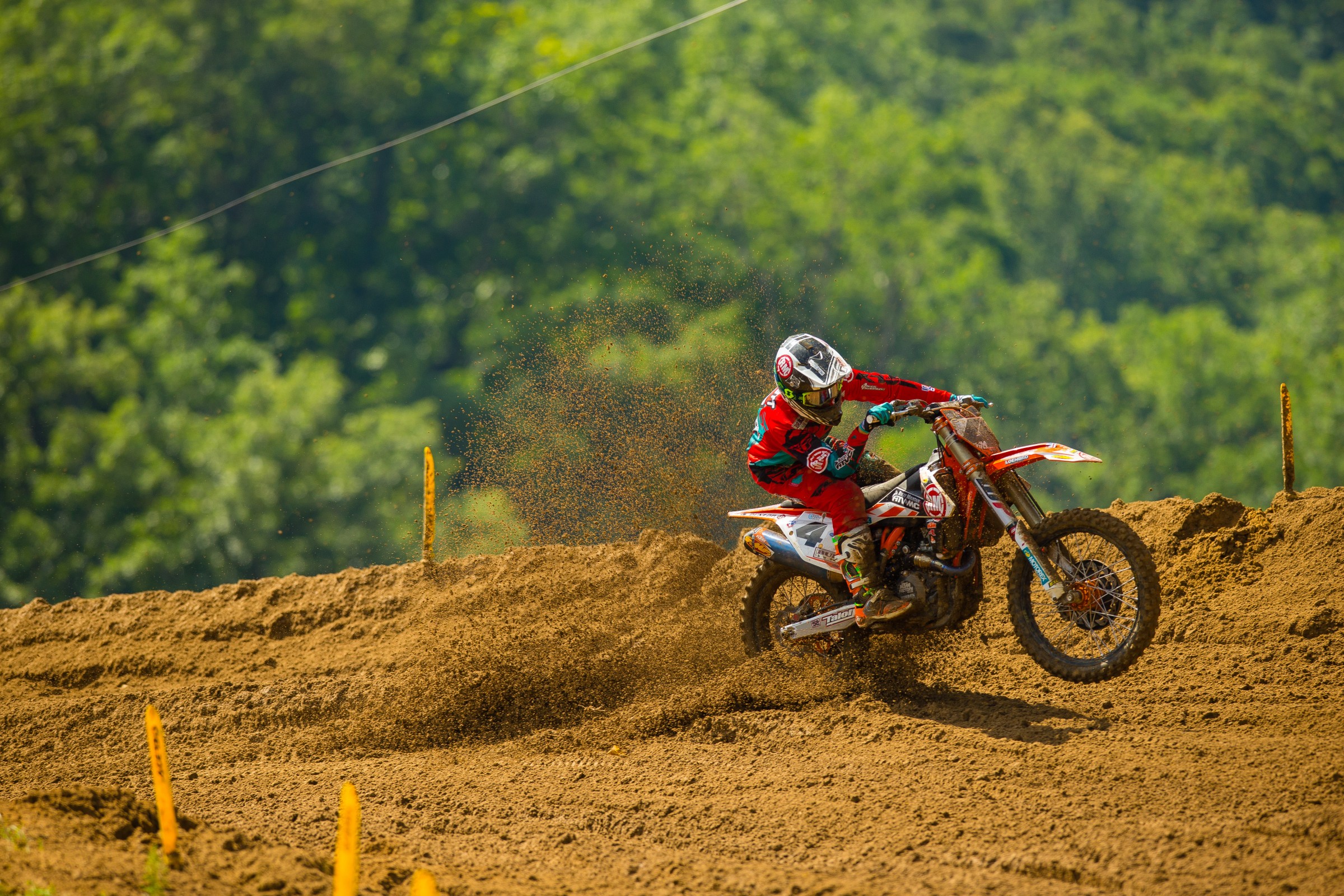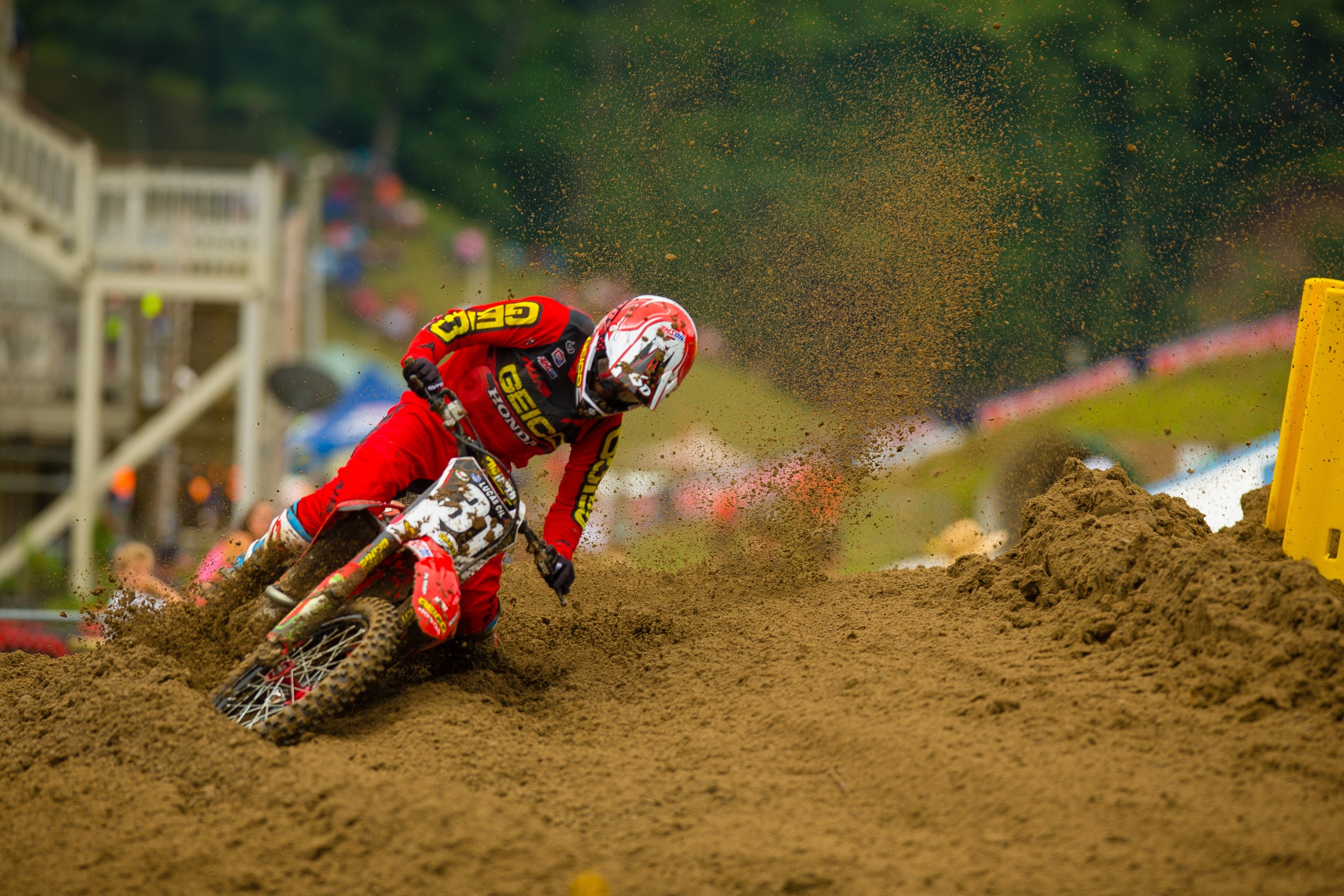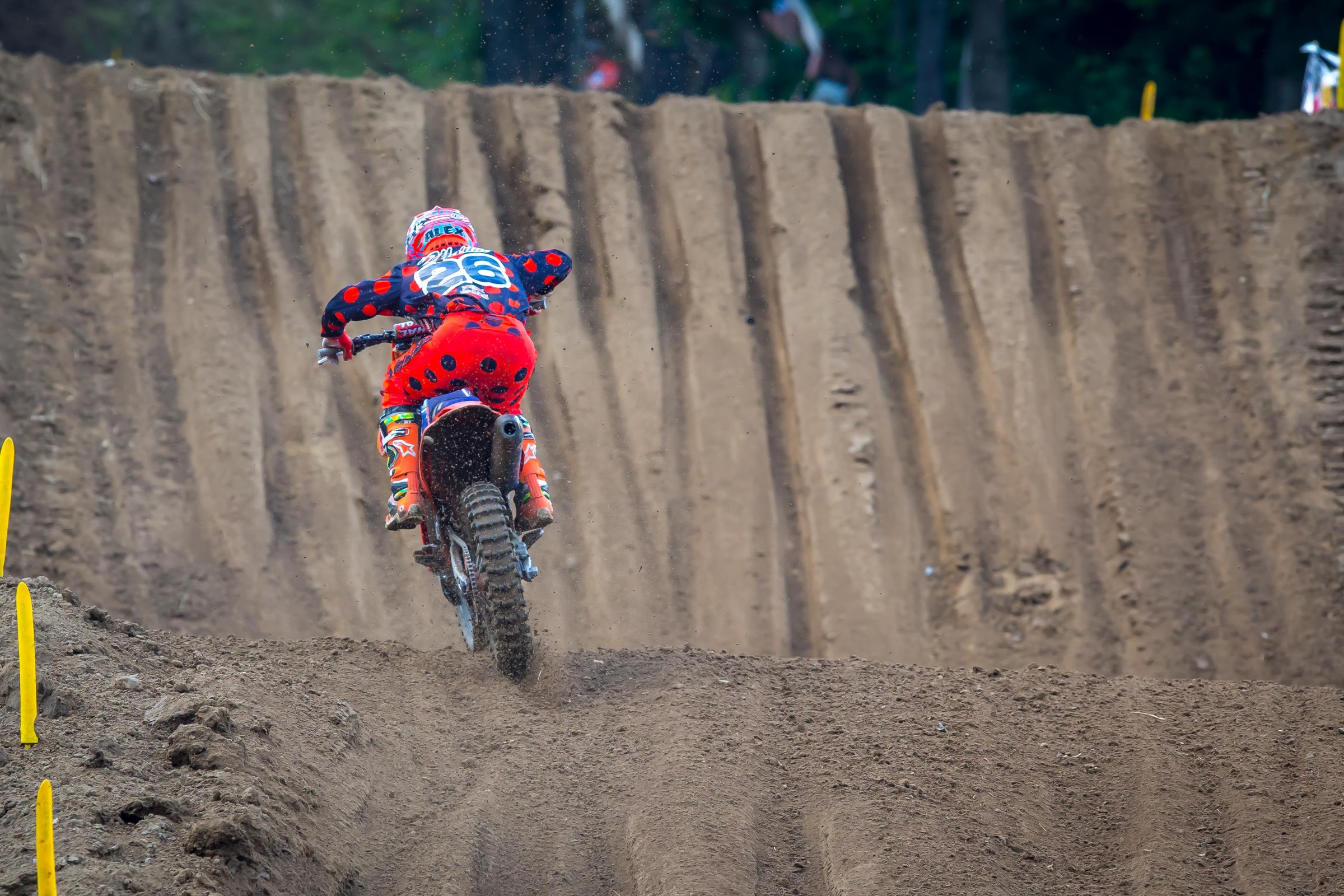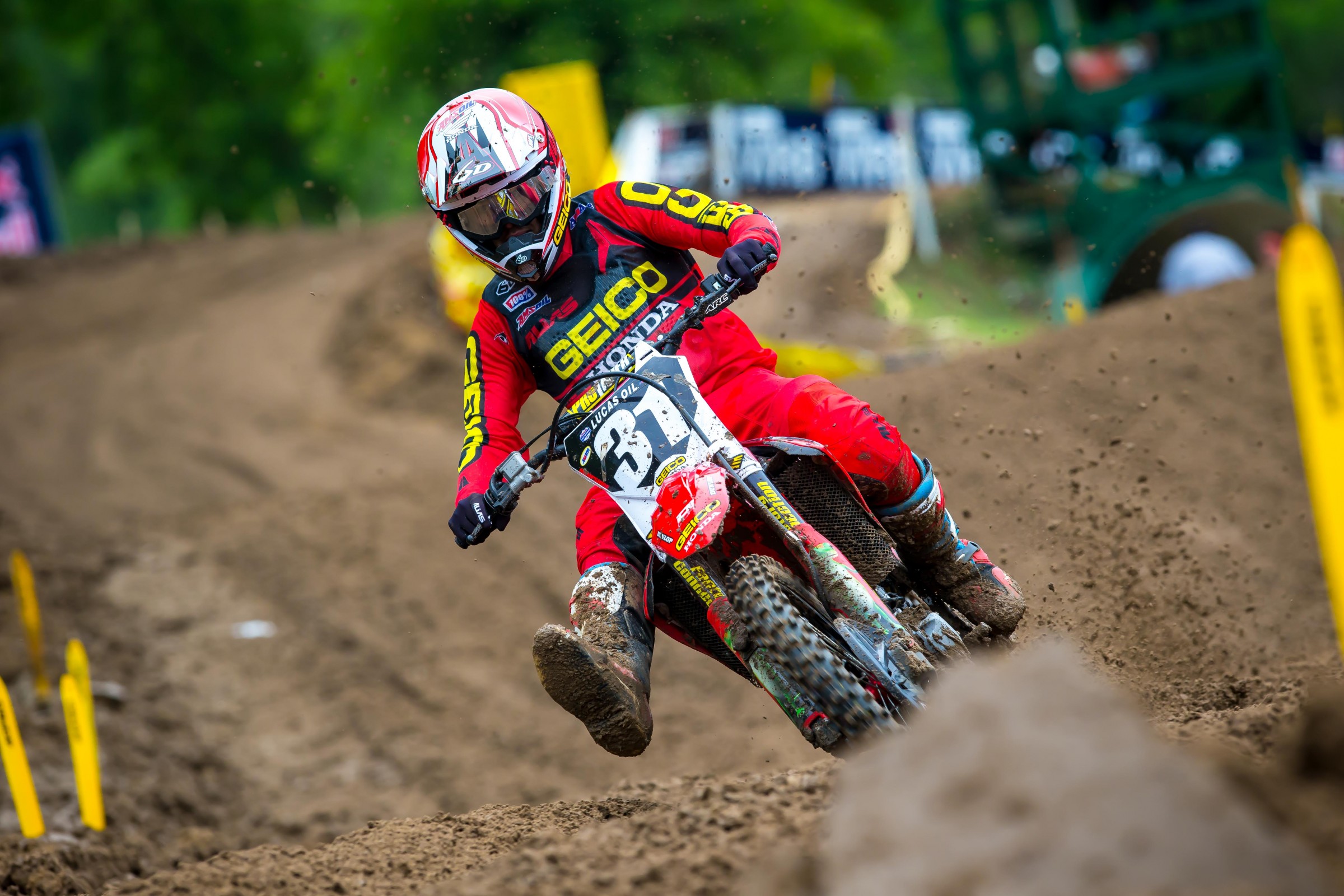Due to large amounts of rain in the days leading up to the Spring Creek National in Millville, Minnesota, combined with nearly 100 truckloads of sand mixed into the circuit, the track turned out to be extremely soft. Alex Martin, who has spent more time on the track than pretty much anyone, said he had never seen ruts form at Millville like they did on Saturday.
So how do the best motocross riders in the game navigate this type of track? Sixteen-year pro Jason Thomas breaks it down so us regular folk can understand.
Blake Baggett
In this photo, Blake Baggett is in the second turn just past the mechanics’ area. This is a fast sweeping turn that has many approaches. The most common is to carry a lot of speed over the rise and flow out toward the wall. This is the way to carry the most momentum and also creates the best angle of entry for the next fast right hander down the hill. From the shadow angle and how heavy the dirt looks, I am confident this is from one of the qualifying sessions. With the wet dirt, keeping momentum is even more important and in a qualifying situation, it’s all about raw speed. He is hitting a big bump here and during a moto, he may find a way to avoid that bump but when it’s only about one lap, the fastest line is all that matters. Just looking at his body language, it looks like he’s carrying a ton of speed here. That high speed and momentum is going to want to push him wide so he is counter-acting that with a hard inside lean. That will drag that bike back to the inside and keep him from high-siding over the berm. Also, when the dirt is really soft, staying just inside of the heaviest dirt is ideal. If Baggett drove it deep into the berm, the dirt would drag down his speed at best and at worst, he would go over the bars like Henry Miller did on the start. By leaning inside, he’s keeping himself lower in the turn and in the harder, faster dirt.
The other thing to note about this turn is that as the day grows long and the bumps large, many riders would opt to square this turn sharply. As you can see in the bottom of the picture, the track is smooth and will stay that way most of the day. It’s definitely slower because less speed can be carried through the turn but when you’re hot and tired, lines like this are a godsend.
RJ Hampshire
Hampshire is shown burying his GEICO Honda in this photo. The dirt was super soft and he looks to be on a qualifying lap. He isn’t dirty from moto roost and the track looks too smooth to be in the moto. Notice the inside leg dragging to keep him from falling over, too. He is out of shape here from coming in too hot and not sliding forward enough in his entry. He’s lost control of his front end and is in salvage mode at this point. He is a seasoned pro so he will ride out of this, but this is a classic case of pushing too hard for a fast lap.
Alex Martin
A-Mart is climbing up toward Mt. Martin here in the second 250 moto. If you have ever wondered what it’s like to deal with a National track at its roughest, take a look at that jump face. As he is cresting the rise just before it, he has taken both feet off the pegs in order to “get light.” He is hoping to bunny hop over the crest of the hill and accelerate hard down the backside. Keeping his wheels on the ground and driving forward is always going to be the ideal approach. As he is cresting the rise, you can also see him beginning to aim left so he can use the jump face that isn’t rutted. That will also allow him to scrub the double or air out the triple if he has a good drive.
Adam Cianciarulo
Here’s Adam Cianciarulo ready to take flight over the friendly Minnesota skies. There are two things to point out in this photo. First, notice his right leg is hanging off the bike and he is gripping tightly with his left leg. That body English is going to steer him to the right in the air and set him up for the line he wants to take down the next straightaway. The idea that the handlebars are the only way to maneuver the bike is a common misconception. Also, notice how loose his left hand is on the handlebars. Many riders hold on so tight that they wear themselves out in a couple of laps. To maintain the race pace for 35 minutes, you have to be relaxed even when trying your hardest.
RJ Hampshire
Another picture of Hampshire here and he is showing perfect form. Each time I do this, I like to find a picture where everything is being done exactly right. He has his inside leg up and out, leading the way. He has his outside leg gripping the tank to give him leverage over the bike. He is sitting forward and his upper body is lined up with the lean angle of the bike. If he was leaning to the inside or outside, he would drag the bike down or stand it up accordingly, both of which would upset his cornering motion. His left hand has a finger on the clutch to manipulate RPM and feed power delivery, and his right hand is trailing the front brake to control his entry speed. This is how it is supposed to look, folks.

